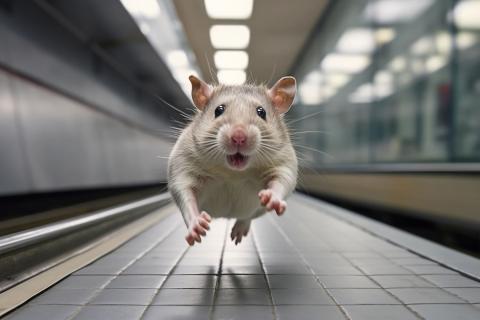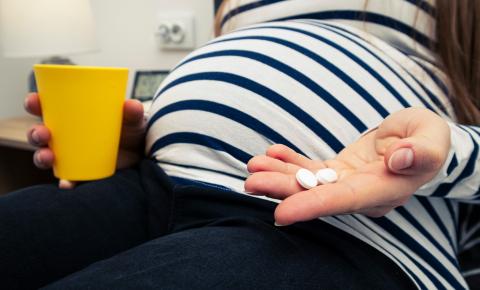New drug improves narcolepsy symptoms, clinical trial shows
Narcolepsy type 1 is a sleep disorder characterised by excessive daytime sleepiness and cataplexy - sudden loss of muscle tone. Existing treatments are based on palliation of symptoms, with moderate success. Now, an international phase 2 clinical trial, involving CEU San Pablo University and other Spanish centres, published in the journal NEJM, shows the results of a new drug targeting the cause of the disorder. Overall, the benefits appear superior and no serious adverse effects were observed. According to the authors, ‘the results are promising’ and represent ‘a very significant impact on the quality of life of these patients’.

Carles Gaig - narcolepsia EN
Carles Gaig
Neurologist at the Hospital Clínic in Barcelona
This clinical trial is excellent news for patients with narcolepsy. It deserves to be widely publicised because it represents a step forward in treatment.
This type of medication (orexin B receptor agonists) looks set to be a game changer in the treatment of this disease (current treatments are symptomatic and fall short or are insufficient).
This is an excellent study, very well designed and published in a leading medical journal such as the NEJM.
A previous trial with a similar drug showed marked efficacy, but the trial was discontinued due to hepatotoxicity in some patients. This new drug does not appear to be hepatotoxic, confirming the efficacy of these drugs through their action on orexin (or hypocretin, the neurotransmitter that is lacking in the brains of people with narcolepsy). In this sense, it would be a more physiological or cause-directed treatment (giving what is missing in the brain, like giving insulin to diabetics who lack it).
[Regarding possible limitations] This is an initial, phase 2 study with only 90 patients included. Further studies are needed to further demonstrate its efficacy and confirm its safety.
Milagros Merino - narcolepsia EN
Milagros Merino Andreu
Specialist in Clinical Neurophysiology and coordinator of the Neurological Sleep Disorders Unit at La Paz University Hospital
It is a very well designed study by the company that has investigated the product, with randomisation of participants and tested against placebo. An acceptable number of subjects has been included (ideally it would be advisable to increase the sample, but the study was methodologically complex and involved a lot of effort on the part of the participants).
It is a novelty among all current options. Previously, attempts had been made to make symptoms remit, without success, when the aim was to supplement with orexin/hypocretin (in this disease there is a deficit of this neurotransmitter). However, different products (Oveporexton is the first but not the only one) have been designed to ‘trick the brain’ by administering a type 2 receptor agonist, i.e. a drug that performs the same function as orexin/hypocretin.
This is a revolution in the approach to type 1 narcolepsy, leading to an improvement in symptoms and therefore in patients' quality of life. It is very likely that this type of drug will be the future treatment for the disease. This does not mean that other products will be abandoned; they may simply be used in certain patients or as a ‘booster’ to achieve clinical improvement.
[As for possible limitations] There are no serious adverse effects, but insomnia, increased urinary frequency, salivary hypersecretion and headache have been reported, mainly, and none of the subjects have dropped out of the study. With the modification of the molecule, no hepatotoxicity has been observed.
In any case, the studies are conducted with ‘blackleg’ patients and the real life results may show moderately different results. We look forward to its commercialisation soon so that we can offer our adult patients another alternative. And we also have families of hundreds of adolescents and children who are interested in this product, but we will have to wait until we can recruit them when the paediatric study starts.
María Rosa Peraita - narcolepsia EN
Mª Rosa Peraita Adrados
Specialist in Clinical Neurophysiology, founder and head of the Sleep Disorders and Epilepsy Unit of the Clinical Neurophysiology Service of the Hospital General Universitario Gregorio Marañón, currently retired
The study is of good quality, given the scientific expertise of the participants and their knowledge of the disease and available treatments.
Hypocretin/Orexin 2 receptor agonists such as TAK-816 (Oveporexton) in patients with type 1 narcolepsy, according to the authors, significantly improve daytime sleepiness and cataplexy over a period of eight weeks in 90 patients studied.
It has not been assessed whether it improves night-time sleep, which is often very disturbed in patients, or other symptoms such as obesity, high blood pressure, depression and cognitive disturbances that are often associated (comorbid) with narcolepsy.
The main problem is that the number of cases studied is limited and also the follow-up period of eight weeks.
The nocturnal sleep of the patients has not been studied and is very disturbed. The main side effects are insomnia and urinary urgency.
Conflict of interest: ‘I have no conflict of interest with any pharmaceutical company. I am a member of the Narcolepsy European Network (EUNN) and have been its secretary'.
Dauvilliers et al.
- Research article
- Peer reviewed
- Clinical trial
- People



